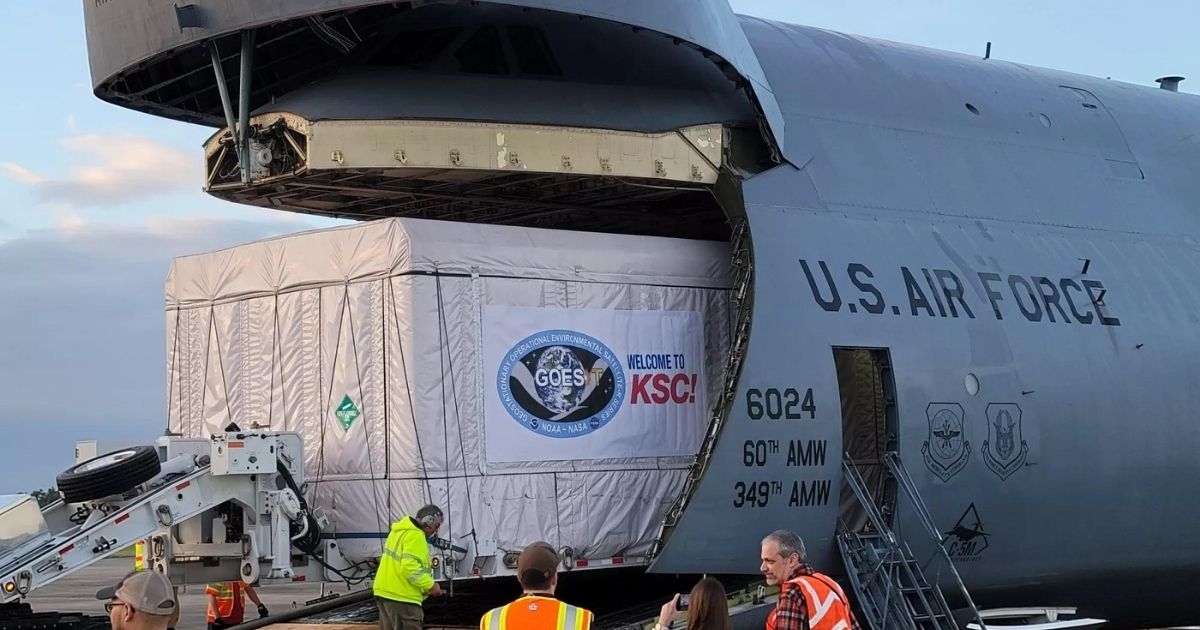NOAA’s GOES-T Satellite Arrives in Florida Ahead of 2022 Launch

NOAA’s GOES-T, the third in the GOES-R Series of advanced weather observing and environmental monitoring satellites, arrived in Florida on November 10, to begin final preparations for an early 2022 launch.
Shipping a satellite is no small feat. GOES-T is the size of a small school bus and weighs over 6,000 pounds! The spacecraft team at Lockheed Martin in Littleton, Colorado, where GOES-T was built, carefully packed the satellite in a special shipping container that protected its sensitive instruments and functioned as a miniature clean room during transport. GOES-T was then driven to Buckley Space Force Base in Aurora, Colorado, where it hitched a ride aboard a C-5 Super Galaxy aircraft to Kennedy Space Center.
GOES-T was then transported to a clean room at the Astrotech Space Operations spacecraft processing facility in nearby Titusville, where it was unpacked. The satellite will now undergo final preparations for an early 2022 launch from Cape Canaveral Space Force Station. GOES-T will launch aboard a United Launch Alliance Atlas V 541 rocket from Space Launch Complex-41.
Upon reaching geostationary orbit after launch, GOES-T will be renamed GOES-18. After it completes checkout of its instruments and systems, the new satellite will go into operation as GOES West, replacing the current GOES-17. In the GOES West position, GOES-18 will watch over the U.S. West Coast, Alaska, Hawaii, Mexico, Central America, and the Pacific Ocean extending to Guam. The satellite will be ideally located to detect and monitor weather systems and environmental hazards that most affect this region of the Western Hemisphere, including wildfires, atmospheric rivers, coastal fog, dust storms, and volcanic eruptions. GOES-18 will also monitor the sun for solar eruptions and detect space weather hazards that can disrupt communications, navigation systems, and power utilities on Earth.
NOAA oversees the GOES-R Series Program through an integrated NOAA-NASA office, operating the satellites, managing the ground system, and distributing the satellite data to users worldwide. NASA’s Goddard Space Flight Center oversees the acquisition of the GOES-R spacecraft and instruments and NASA’s Launch Services Program, based at Kennedy Space Center, launches the satellites. Lockheed Martin designs, builds, and tests the GOES-R Series satellites. L3Harris Technologies provides the main instrument payload, the Advanced Baseline Imager, along with the ground system, which includes the antenna system for data reception.

